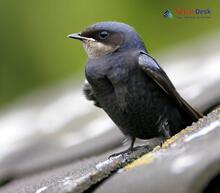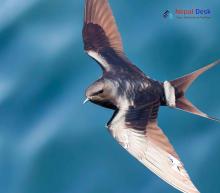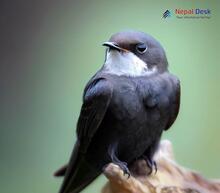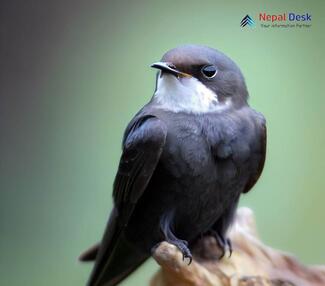Nestled amidst the majestic Himalayas, Nepal's diverse landscape is not just a haven for adventure seekers and nature enthusiasts but also a sanctuary for countless bird species. Among these feathery inhabitants, the Apodinae subfamily, commonly known as swifts, holds a unique place in Nepal's avian fauna. Let's dive into their intriguing world, from their distinctive characteristics to their incredible life in the skies of Nepal.
Swifts: Masters of Aerial Skills
The Apodinae subfamily belongs to the larger family Apodidae, which also includes hummingbirds and treeswifts. Swifts are small to medium-sized birds that exhibit remarkable mastery of aerial skills. With their streamlined bodies, long, narrow wings, and powerful breast muscles, swifts effortlessly glide through the sky at considerable speed and endurance.
Contrary to popular belief, swifts are unrelated to swallows despite their similar appearance. However, swifts boast unique traits that easily distinguish them from other birds – such as their sharp, hooked bills for catching insects mid-flight and virtually unmatched aerial prowess.
Life in the Skies of Nepal
Given its varied topography ranging from subtropical forests to alpine zones, Nepal provides an ideal habitat for several species of swifts. Some common ones include the House Swift (Apus nipalensis), White-throated Needletail (Hirundapus caudacutus), and the Alpine Swift (Tachymarptis melba). These adept fliers can often be seen swooping through Nepalese skies or darting nearby buildings and cliffsides in search of insects.
Breeding Patterns and Nesting Behavior
The breeding season for swifts in Nepal typically starts around April and extends till August. During this time, they can be found constructing nests out of natural materials like plant debris, moss, and feathers, glued together using their saliva. These nests are often built on cliffs, cave walls, or under the eaves of houses and temples.
While some species form large breeding colonies, others prefer to nest solitarily or in smaller groups. Swifts are known to exhibit a strong sense of mate fidelity and are monogamous in their pairings. Both parents take turns incubating the eggs and feeding the hatchlings.
Conservation Efforts
Although swift populations in Nepal seem to fare better than in some parts of the world, habitat loss due to deforestation and urbanization poses a considerable threat. Nepal's government and various non-government organizations are actively working towards conserving their natural habitats. Birdwatchers, researchers, and enthusiasts can contribute by documenting sightings and raising awareness about these fascinating birds.
In Conclusion
Nepal's Apodinae subfamily presents us with yet another astonishing marvel of nature. Their agility in flight, remarkable breeding habits, and overall charming presence make swifts a captivating subject for bird enthusiasts worldwide. The next time you find yourself beneath the vast skies of Nepal, don't forget to look up – you just might catch sight of these speedy aerial performers gracefully weaving through the air.





